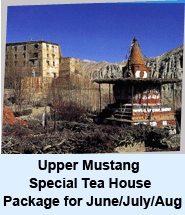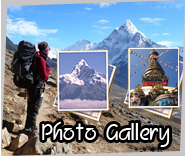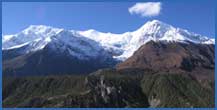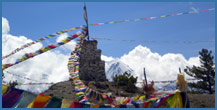Once is Not Enough for Naturally Nepal
Tour in Nepal
Trekking in Nepal
Tour in Nepal >> World Heritage Tour of Kathmandu Valley
Trip Itinerary
Day 1: Arrival at Airport, Kathmandu and transfer to hotel.
Visit our office for detailed information about the tour.Overnight at hotel on B/B basis.
Day 2: Sight seeing tour of Swoyambhunath, Pashupatinath, Boudhanath and Kathmandu Durbar Square. Overnight stay at Hotel on B/B Basis.
Swayambhunath:
The stupa of Swaymbhu is one of Nepal’s most distinctive and memorable landmarks. It stands on the summit of a hill called Singum or Gorsinga(cowhorn) or Gopuccha (Cowtail), which rised some 300feet from the valley floor on the western outskirts of Kathmandu. The site has been sacred for at least 1,600 years and is the kingdom’s most venerated Buddhist shrine. This is a very religious shrine of Buddhists also worshipped by the Hindus which also known as monkey temple..
Pasupatinath: This is a temple of Lord Shiva – Pasupatinath with two tiered golden roof and four silver doors, situated five kilometer north-east of Kathmandu at the bank of holy river Bagmati. The temple attracts thousands of pilgrims each year and has become well known far beyond the Kathmandu valley. In its vicinity, however, there are a number of other holy shrines which are no less important for the Hindus. The temple is famous for cremation as well. Hindus people believe that one can enter to heaven if the passed body cremated here.
Bauddhanath:
This stupa is 6 km to the east of Kathmandu which is traditionally known as Khasty or Khasa or Jarungkhasor in Tibetan. It is said to be built in 5th century AD. This ancient stupa is one of the biggest in the world which stands on an enormous plinth composed of three broad terraces with a complex pattern of interlocking squares and rectangles. The base of the dome is ringed with 108 inset images of Amitabha and encircled by a brick wall containing prayer-wheels in groups of five. The site is exclusively preserved by Tibetans and highland Bhotiya Nepalis who profess a Tibetan style Buddhism.
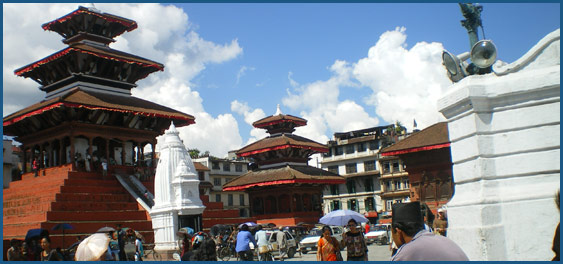
Kathmandu Durbar Square :
While visiting around Katmandu Durbar Square we will see Hanuman Dhoka, the old and historic palace of Kathmandu named after monkey God, Hanuman. It is historic seat of royalty. The Kings of Nepal were crowned and their coronations also held inside the court yard here. There is a statue of King Pratap Mall sitting on the stone pillar in the front and temple of Jagannath from mediaeval period .Within the walking distance you will find the tall temple of Taleju from 1549 AD, the large stone statue of Kal Bhairav, the God of destruction,. the Big Bell and Big Drum and Hindu Lord Shiva and his consort Parvati peeping from window. Visit the temple of Kumari, the residence of Living Goddess within the vicinity. Kumari means the virgin girl. The girl is selected from Buddhist family. The building has profusely carved wooden balconies and window screen. Next a very interesting temple is Kasthamandap which is believed to be built from a single tree trunk and the name Katmandu is derived from this temple.
Day 3: Sight seeing tour of Bhaktapur & Patan Durbar Square. Overnight stay at hotel on B/B basis.
Bhaktapur (Bhadgaon) Durbar Square:
Bhaktapur, which literally means City of devotees, has been called Bhadgaon or Bhadgaon ( rice-village) in the past. The city lies about 15km east from Katmandu.As soon as you enter the gate of Durbar Square of Bhaktapur the whole complex is impressive, wider, clean and beautiful with beautiful Lion Gate, Golden Gate, palace of 55 windows, Batsala temple, barking Bell, the statue of King Bhupatendra Mall on a stone pillar, public bath and temple of Pasupatinath After strolling down to corner lane you come another big square. On the left you will find the tallest temple of Nyatapola which means 5 tiers representing symbols of 5 basic elements of nature such as water, air, fire, earth and sky. This is a highest pagoda temple of Nepal ever built with architectural perfection and artistic beauty in 1702 AD by the King Bhupatendra Malla. Next to Nyatapola is another giant temple of Bhairavnath, the God of Terror in three story built in 1718 AD. If you walk ahead for about 20 minutes you will come to another square of a Dattatraya temple built in 1427 AD from a trunk of single tree. Behind the temple there is a monastery where you will notice exquisitely carved door frame and windows and also a famous peacock window back wall of the monastery.
Patan Durbar Square:
The ancient city Patan is also known as Lalitpur, which literally means city of beauty. The city lies 5 km to the south of Katmandu. The whole complex of Durbar Square consists of different sections of ancient palace like Sundari Chowk (beautiful court yard) where exquisite windows and door carving are seen and the Tushahity (Royal Bath) a master piece of stone carvings and others are Mul Chowk (main court yard), Keshav Narayan Chowk. In front of the palace in the main square there is a statue of King Narendra Malla sitting on the stone pillar. Next to the pillar there is a famous Krishna Mandir temple with 21 pinnacles built all in stone. This is said to be a Shikhara architect from India. Rest you will see several pagoda style temples like temple of Bhimsen, and the public bath, dragon headed spout and the water runs 24 hours. There are also many other famous Buddhist temple like Hiranya Verna Maha Vihar (the Golden temple) and Maha Bouddha with ten thousands Buddha's images. Most of the people of Patan city are Buddhists. Patan is also very famous in its art work. There are many fine craftsmen in Patan who produce bronze/brass art work in different images/statues of Hindu/Buddhist Gods and Goddesses, silver jewelleries, wood carvings,. Most of the handicrafts you see in the local shops of Katmandu valley are produced in Patan.
Day 4: Transfer to Airport for departure from Nepal.





